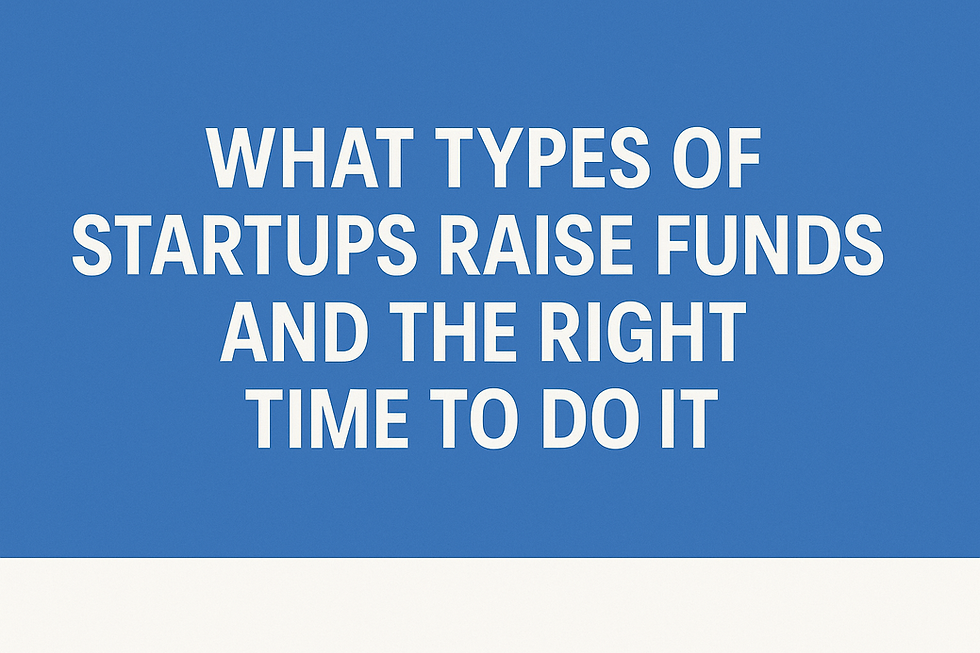How to Make the Perfect Pitch for Early-Stage Fundraising
- Awake Partners

- Oct 23
- 4 min read
TL;DR — The Perfect Early-Stage Pitch:
• A winning pitch blends storytelling, traction metrics, and a clear vision.
• Investors want to know why now, why you, and why this market.
• Must-have slides: problem, solution, traction, team, financials, and ask.
• The best pitches are simple, confident, and tailored to the investor.
In early-stage fundraising, your pitch is often the deciding factor. Investors hear hundreds of startup presentations every year — but only a few stand out. In this guide, we break down what makes a pitch effective, how to structure your story, and the techniques founders can use to win investor trust from the first meeting.
Why Your Pitch Matters in Early-Stage Fundraising
At Pre-Seed and Seed stage, most startups don’t have years of financial history. Instead, investors base their decisions on the clarity of the vision, the strength of the team, and the potential for growth.
This is why your pitch plays such a critical role. It transforms your idea into a compelling opportunity, bridging the gap between where you are today and the future you want to build.
The Core Elements of a Winning Pitch
A strong investor pitch usually covers 6 essential elements:
The Problem – What pain point exists in the market?
The Solution – How your startup addresses that problem.
Market Opportunity – The size and growth potential of your market.
Business Model – How you plan to generate revenue.
Traction – Early results, KPIs, and validation of demand.
Team – Why your team is the right one to execute.
These fundamentals, supported by a clear ask (the funding amount and use of proceeds), form the backbone of every successful early-stage pitch.
Sequoia’s pitch deck template is a benchmark for early-stage founders worldwide.
Storytelling: Turning Your Vision into Investor Excitement
Facts alone don’t inspire action — stories do. Investors want to understand not only what you are building, but why it matters.
A great pitch connects emotionally with the audience.

Instead of saying “we are building a SaaS tool for logistics,” frame it as a journey: “Every year, billions are lost due to supply chain inefficiencies — our solution gives back time and money to companies while reducing waste.”
By framing your startup in terms of impact, urgency, and vision, you make investors feel they are joining something bigger than just another business.
As First Round Review highlights, the best founders translate complex ideas into simple, human stories.
Balancing Numbers and Narrative
While storytelling is powerful, early-stage investors still want to see evidence of traction.
This means showing key metrics such as CAC, LTV, MRR, churn, or user growth curves. The art lies in balancing narrative with data: your story draws them in, your numbers prove you can deliver.
💡 Tip: Every chart in your deck should answer a question investors are already thinking: “Why should I believe in this startup’s growth potential?”
Common Mistakes to Avoid in Investor Pitches
Many early-stage founders make avoidable mistakes that weaken their credibility.

Some of the most frequent include:
Overloading slides with text instead of visuals.
Ignoring competitors, which makes investors assume you haven’t studied the market.
Being vague about the fundraising ask, such as “we’re raising between €500K–1M.”
Overpromising traction or timelines without realistic data to back it up.
Avoiding these pitfalls ensures your pitch is perceived as professional, grounded, and trustworthy.
Practicing and Perfecting Your Delivery
The best pitch in the world won’t matter if it’s delivered poorly. Practice is essential.
Rehearse your presentation until you can explain your business clearly without reading slides. Anticipate tough questions about risks, competition, or financials, and prepare concise answers. Recording yourself can help identify areas where your delivery is too fast, unclear, or lacking energy.
Harvard Business Review notes that persuasion in pitches is as much about trust as it is about facts.
Founders who come across as confident and coachable — not defensive — are far more likely to build trust with investors.
Key Takeaways
• Storytelling makes data memorable — combine narrative with metrics.
• A concise deck with essential slides outperforms overloaded presentations.
• Preparation, rehearsal, and tailoring to your audience are what close the deal.
How Awake Partners Helps Founders Master Their Pitch
At Awake Partners, we help founders transform their ideas into investor-ready pitches.
Our support covers every step of the process:
Designing clear, professional pitch decks with strong storytelling.
Building financial models and KPIs that align with investor expectations.
Running mock pitch sessions with feedback to improve delivery.
Preparing founders for Q&A with investors, including tough objections.
With expert guidance, you avoid common mistakes, shorten your fundraising cycle, and maximize your chances of securing the right investors.
Q&A — Quick Answers for Founders
Q: What makes a strong early-stage pitch?
A: A compelling story, traction proof, a strong team, and a clear fundraising ask.
Q: What slides should a pitch deck include?
A: Problem, solution, market, traction, team, financials, and the investment ask.
Q: How do I convince investors in the first meeting?
A: Focus on clarity, confidence, and relevance — show why your startup is uniquely positioned to win now.



